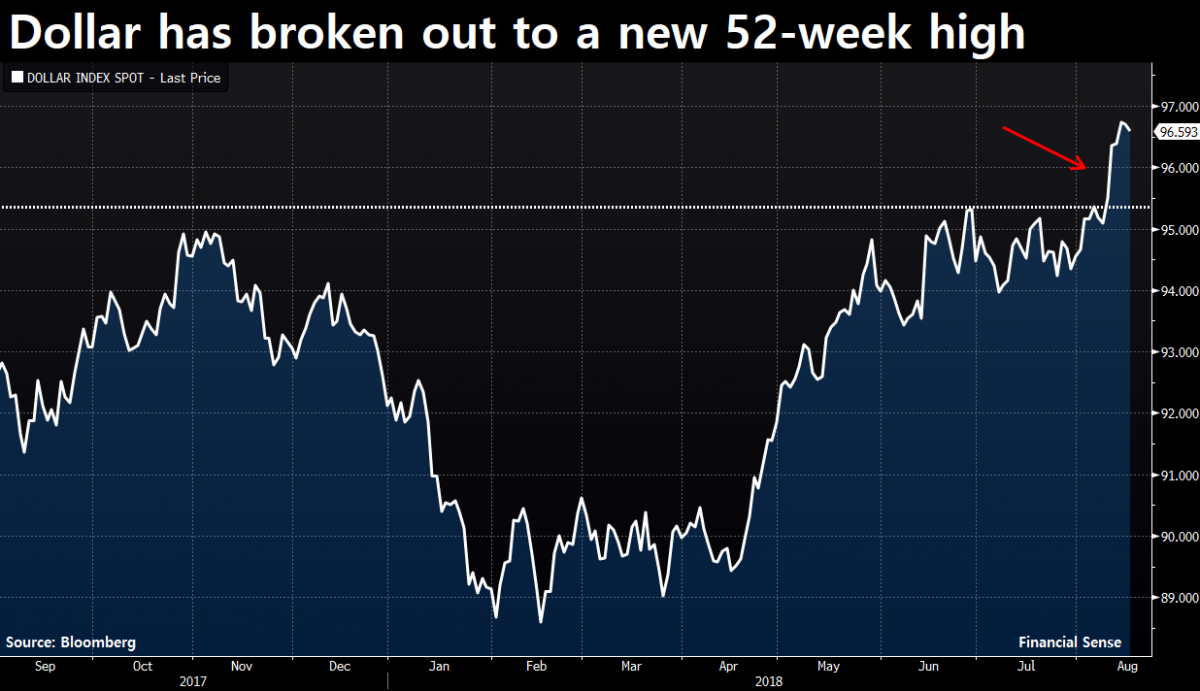Listen to this podcast on our site by clicking here or subscribe on iTunes here.
Marc Chandler from Brown Brothers Harriman discusses the US dollar's recent breakout, why he expects it to consolidate and then move higher into next year, and his concerns regarding how low the Fed funds rate is upon entering the next recession.
The Fed’s Next Move
There is a lot of fiscal stimulus in the pipeline, Chandler noted, which is extending this already long business cycle.
What’s really most concerning for Chandler, however, is that while we’re 3 years into the Fed’s tightening cycle, the real Fed funds rate — the Fed funds target of 1.75 to 2 percent, minus CPI — is still negative.
“In the past, it's taken a negative real Fed funds rate to get the economy to recover from the recession,” Chandler said.
“So what are we really talking about? When the Fed stops raising interest rates, the real Fed funds rate will be just slightly positive, and so we begin the next cycle. That's what bothers me. Monetary policy is still very easy with a very low real Fed funds rate. Meanwhile, this fiscal stimulus exhausts political will for any further fiscal stimulus.”
Near-Term Consolidation in the Dollar
Two weeks ago it looked like the dollar had broken out higher, Chandler noted, and last week we saw strong follow-through in dollar gains.
What’s concerning, however, is that for first time in Chandler’s memory, most of the major currencies, aside from the Canadian dollar and the Japanese yen, have seen extreme downside moves.
We’re likely to see near-term dollar consolidation as a result.
“I think there’s exhaustion,” Chandler said. “It almost feels like capitulation. … It just illustrates that this move we've seen in the dollar, especially in the last few days, has accelerated. It leaves the dollar a bit stretched, even though I still like the dollar in the longer term.”

Source: Bloomberg, Financial Sense® Wealth Management. Past performance is no guarantee of future results. All indexes are unmanaged and cannot be invested into directly
Tailwind Until Mid-2019
There aren’t any obvious negatives for the dollar here, Chandler noted. With the interest rate differential providing a tailwind, as tight monetary policy sucks capital into the U.S, there isn’t much that can obviously stop further rallying.
This narrative, however, does have a shelf life, Chandler said. The dollar will eventually peak, and we have to ask when the Fed will likely be done raising interest rates.
He sees that timeframe playing out around the middle of 2019. Interestingly, this is when he thinks the European Central Bank will begin raising rates.
“What I'm really looking at is a very desynchronized business cycle, sort of like the great financial crisis,” Chandler said.
Listen to this full interview with Marc Chandler by clicking here. For more information about Financial Sense® Wealth Management and our current investment strategies, click here. For a free trial to our FS Insider podcast, click here






